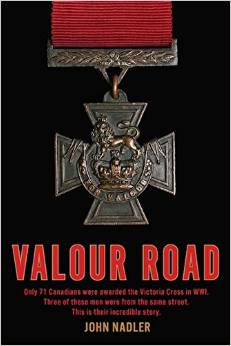Title: Malta: The Spitfire Year
1942
Author: C Shores, B Cull, N
Malizia
ISBN: 978-0-948-81716-8
Publisher: Grub Street
Hardcover
Pages: 704
Photos/Maps:100’s b/w /3
The authors have a long record
of producing quality books of exceptional detail and breadth. This follow on to
their first installment “Malta: The Hurricane Year 1941” is no exception.
As with their previous works, the
authors break down their narrative into individual days and provide the reader
with significant incidents on the ground, at sea and in the air as they occur
(incorporating the experiences of both the Allied and Axis forces). The degree
of detail that they are able to provide throughout their discussion (down to
the serial numbers of individual aircraft engaged for example) is stunning and
certainly adds a tactical dimension that compliments the strategic and
operational narrative beautifully.
Books should be educational and
not just a reiteration of dry facts and statistics; to that end the reader
learns a great deal about the peripheral activities that were critical but have
been neglected in the documentaries regarding the Battle for Malta. For example,
the Italians lacked the capacity for RDF (Radar Direction Finding) resulting in
their being severely hampered in naval operations in the Mediterranean. What is
not well known was their superb capability in the development of ‘Servizio
Alfa’ (Alfa Service) which entailed the use radio interception in order to
track British movements, advise their aircraft of impending interceptions and
interfere with British radio direction finding to draw Allied aircraft off
course as they were transiting toward Malta. The Germans, for their part,
employed multiple Freya radar systems to aid in the tracking and engagement of
Allied resources.
Additionally, their discussions
relating to the Allied use of Ultra intercepts – Ultra was the German coding
system that had been broken by the British and subsequently provided
unprecedented insight into Axis operations – showed the lengths to which the UK
went to protect their accomplishments. The Commander at Malta was provided with
information derived from Ultra about Axis convoy movements; however, he was
ordered to have the convoys located via reconnaissance flights before engaging
in order to ensure that no suspicions were raised regarding how the Allies were
able to find these targets.
This book is focussed upon the
air campaign associated with Malta; however, the sea and land campaigns within
Africa and the Mediterranean could not help but have a direct effect upon the
fortunes of the island. The authors incorporate these facets seamlessly into
the narrative and provide for the reader not only ‘the bigger picture’ but also
highlights the variety of operations that were undertaken concurrently (torpedo
attacks, harassment bombing operations, fighter interception, reconnaissance,
air sea rescue etc) by all players involved.
Due to the fact that the authors
have broken out the narrative into individual days, one develops an
appreciation of the scope and nature of operations that occurred on a daily
basis but never have been recounted in histories. Individual strikes, close
calls, narratives of downed flyers spending days floating in the Mediterranean
with little hope for rescue are all included. Additionally, the steps taken by
the Allies to aggressively take the fight to the enemy with strikes on Axis
airfields and harbours despite the heavy pressure of the Axis on the defences
of Malta are very eye opening.
One also begins to appreciate
just how perilous was the situation facing the Allies. The logistic lines were
extremely tenuous and the ability of aircraft to respond to Axis incursions
relied exclusively upon the ability of tankers and supply ships to get through
to the island; the story of the tenacious defence of and fortuitous arrival of
the oil tanker Ohio being recounted in great detail. Associated with this, were
the events surrounding the rescue of two Italian pilots (shot down while
attacking the convoy) by a German flying boat being guided and escorted by
British Spitfires and Beaufighters; all as a result of mistaken communications!
There is a heavy Canadian connection
to the air battle above and around Malta. RCAF pilots and aircrew were a
significant and integral part of operations associated with the battle.
Probably best known is the success of Plt Ofr GF ‘Buzz’ Beurling of 249 Sqn.
His reputation as a loner and superb fighter pilot was enhanced by his being
the top scoring Allied pilot during the Malta Campaign with 26.5 kills credited
(compared with his next closest at 12.5 kills).
There are very few observations
to be made regarding this book that may be seen as anything but positive; the
most significant being that the index is printed in a painfully small font. The
degree of detail provided is unsurpassed and the flow and tone of the
narrative, tight and engaging. Grub Street has produced a book of the highest
quality. I highly recommend this book.



